Pines on the Iberian Peninsula
2 years ago · Updated 6 months ago
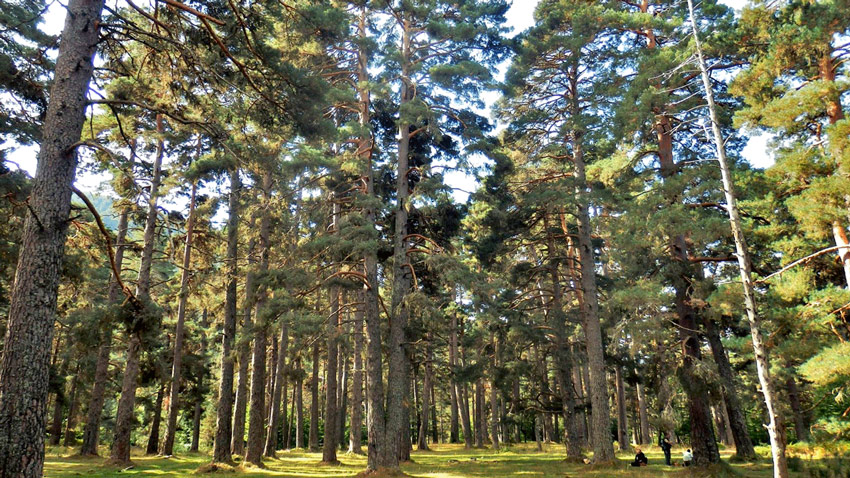
- Types of pine trees: you will encounter several when you go to the mountains
- What types of pine trees can we find on the Iberian Peninsula?
- The Pinus genus: a very special species
- Mushrooms and pine trees
- What types of pine trees can we find on the Peninsula, the Balearic Islands and the Canary Islands?
- Pinus halepensis, white pine, Aleppo pine
- Pinus pinea, the stone pine
- Pinus pinaster, maritime pine
- Pinus nigra, black pine, Salzmann pine, or Laricio pine
- Pinus sylvestris, Scots pine
- Pinus uncinata, black pine
- Pinus canarienses, Canary Island pine
- Pinus radiata or Monterey pine
Types of pine trees: you will encounter several when you go to the mountains
Pine trees are probably the most common tree species in the forests of the Iberian Peninsula. They are found throughout our geography and are clearly dominant within the forest area.
They are also mycological habitats where we can find a large number of mushrooms. We will explain the characteristics of the pine trees found in our forests, what they are like, and what edible mushrooms we can find under their trunks.
If you are interested in buying mycorrhizal pines of the varieties we discuss in this article, you can visit ouronline store for mycorrhizal plants.
What types of pine trees can we find on the Iberian Peninsula?
On the Iberian Peninsula, as well as in the Canary and Balearic Islands, we will mainly find the following species of pine trees:
- Pinus halepensis
- Pinus pinea
- Pinus pinaster
- Pinus nigra
- Pinus sylvestris
- Pinus uncinata
- Pinus canarienses
- Pinus radiata
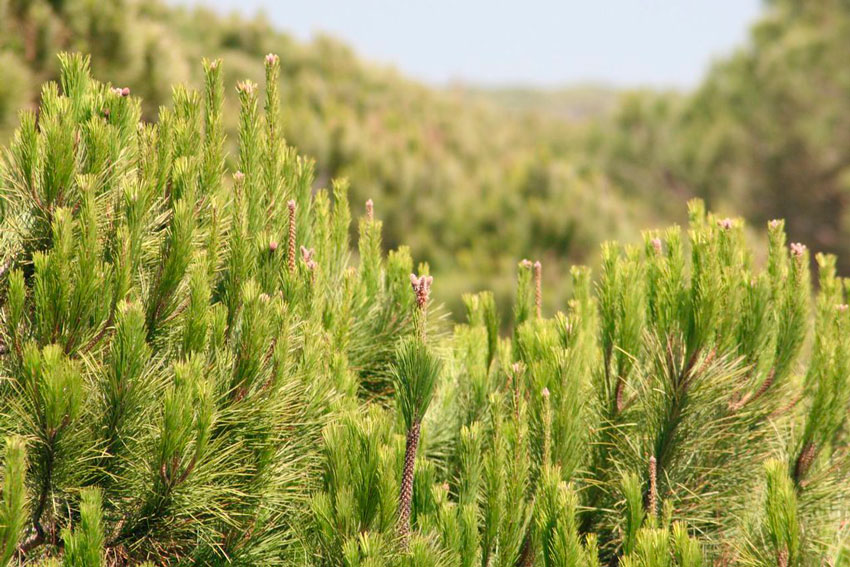
The Pinus genus: a very special species
Pines belong to the Pinaceae family and are only found naturally in the northern hemisphere. The only exception is Pinus merkusii, which can be considered the only species of pine that grows naturally in the southern hemisphere.
Among the different species of pine trees, we can find some that are not much older than a few centimeters tall, while others can reach considerable heights. This depends greatly on the species and the habitat where it is grown.
Pines, evergreen trees
Pines are evergreen and have resin ducts or resiniferous ducts. Their needles are not photosynthetic, and depending on the species, they vary considerably in number. These needles are helical and alternate.
Their male flowers are simple cones that can be seen on the annual shoots, with a creamy yellow color dominating at the end of each branch. In addition, pine trees generally produce a lot of pollen. On the other hand, the female flowers are usually located at the top of the tree.
The cones do not usually decompose, but the scales that form them separate and release the seeds.
Each scale contains two nuts with an appendage next to them; and the fertilization of the pine cones, as well as their maturation and that of the nuts, can be delayed for up to two or three years, so that the nuts can take a similar amount of time to be released.

Mycorrhizal pines
Today, mycorrhization in forest plants has evolved so much that you can even grow your own trees in the field. That's why, if you want to grow your own niscalero pines in a simple and convenient way, at La Casa de las Setas we have prepared a section of mycorrhizal trees to get you started.
Please note that each species is adapted to a specific type of soil and environment, so it is essential to select your tree or mycorrhizal pine according to the environmental conditions of the place where you are going to plant it.
In the selection of mycorrhizal pines, you will find species of mycorrhizal pines with boletus edulis or boletus pinícola, but mainly different species of lactarius pines, pines that produce lactarius deliciosus that will adapt to most habitats on our peninsula.
If you are looking to buy mycorrhizal pines, in our mushroom-producing plant section we work with the leading national nurseries specializing in the production of mycorrhizal wild plants. Don't worry about finding the best prices for milk cap pines or mycorrhizal plants. At Casa de las Setas, we have the best offers on pines and other mycorrhizal wild species. Dare to become a myco-grower
If you are thinking of buying mycorrhizal plants, the best time to start planting mycorrhizal pines is in late January and early spring. Also in autumn. You should avoid the most extreme months and, above all, monitor watering during the first 2 years. Lack of water is the number one danger for our mycorrhizal plant, not to mention the damage caused by animals that can be found in the forest (wild boars, deer, goats, etc.). Remember: water every 2-3 days and protect the plant with a stake
Mushrooms and pine trees
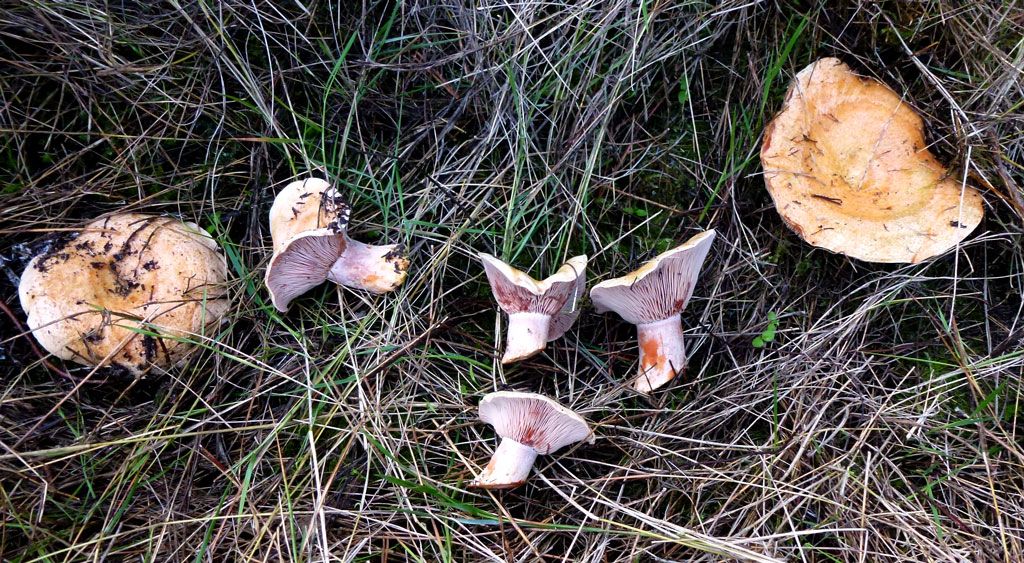
Fans of milk mushroom picking are well aware of the joys that pine trees can bring during the season. They are one of the tree species that produce the most mushrooms and fungi, highlighting the symbiosis they form with certain species of milk mushrooms, mainly.
And as pines are the predominant tree species in our geography, their mycological activity is high and varied. Some of the mushroom species that we can find under pines and associated with their roots are the boletus pinophile among Aleppo pines and the suillus mediterraneus among black pines; although we can also find different edible mushrooms, such as Boletus edulis, Boletus pinophilus, or Amanita rubescens. Which is your favorite?
It is also quite likely that you will come across other edible mushrooms such as Lacatarius deliciosus or Lactarius sanguiflus during your walks in the forest, especially in autumn. And since pine trees are one of the richest mycological habitats, if you look carefully, you are sure to find many other mushrooms with which to prepare a delicious meal: Xerocomus badius, Russula integra, Suillus luteus or Lepista nuda.
What types of pine trees can we find on the Peninsula, the Balearic Islands and the Canary Islands?
In our geography, we can find different varieties and types of pine trees. We will list the different species and their characteristics
Pinus halepensis, white pine, Aleppo pine
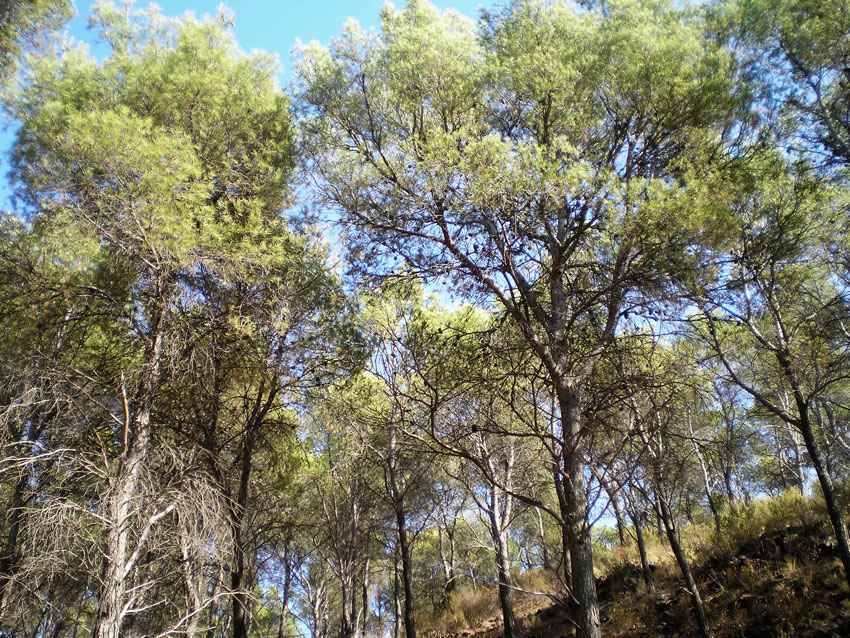
The white pine, also known as Aleppo pine or Pinus halepensis, is the smallest of the pines found in our region. It rarely reaches heights of more than 25 m. Its bark is grayish in color, light in tone, darkening with age.
It is characterized by needles, or “pine leaves,” no longer than 10 cm. Its crown is very open, with long, very flexible branches. Its cone is also characteristic, with a smooth surface and a thick, long stem.
The colors of the Aleppo pine vary, and it is rare to see its resin flow. The Aleppo pine flowers in spring, and its cones do not ripen until the second season; it is a fast-flowering tree and it is not uncommon to see cones on Aleppo pines less than 10 years old.
It is a typical Mediterranean species, which is abundant along the entire coast, in the Balearic Islands and generally throughout the Mediterranean. Its name comes from the Syrian city of Aleppo, where it is an abundant species. Its presence in Portugal is anecdotal and seems to have been introduced by humans.
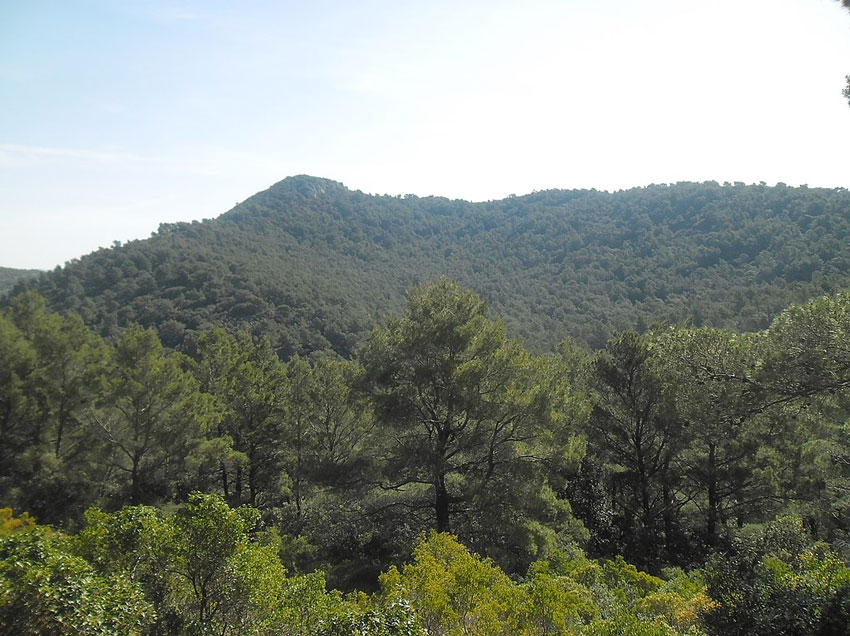
This species of Mediterranean pine is perfectly adapted to altitudes between 0 and 1,000 meters, although it is not uncommon to find specimens that exceed this altitude. Of all the cultivars, this is the most resistant to drought and extreme temperatures. It is the most xerophilous species of all those we will list. It prefers calcareous soils, although it also tolerates other types of soil. It does not have much competition, which is why it has established itself as the main species in the areas where it has been planted.
In terms of longevity, it is rare for specimens to live longer than 200-250 years. The Aleppo pine can form forests with other specimens of Pinus halepensis, although it can also form mixed forests with kermes oak, juniper, holm oak, mastic trees, and other types of pine such as P. pinaster or P. pinea.
The timber of this species is not highly valued, nor is its resin. Its forestry use is concentrated in reforestation. It should be noted that this is the most versatile species of those listed here. It also plays an important role in slowing down deforestation after forest fires by retaining fertile soil and delaying erosion.
Pinus pinea, the stone pine
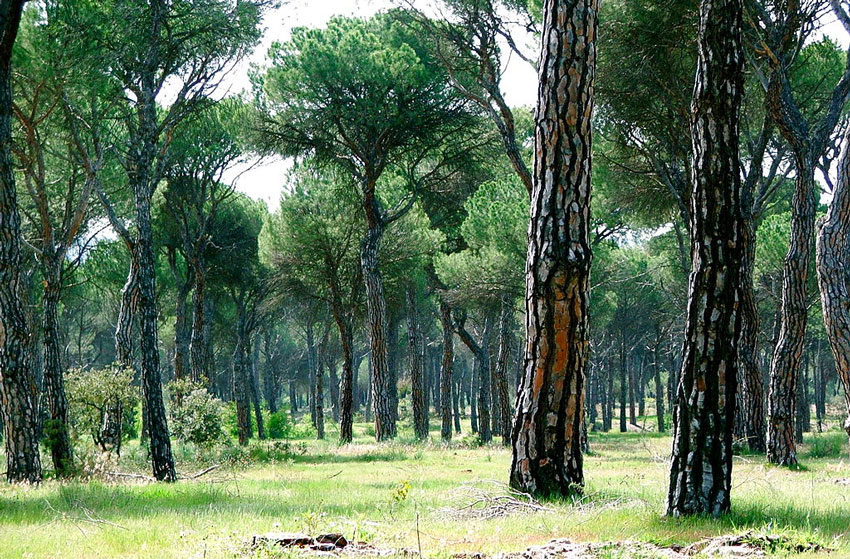
Popularly known as the parasol pine. This species grows to well over 30 m in height and has a distinctive umbrella-shaped crown.
It has the largest secondary needles of all Iberian pine species, measuring between 12 and 15 cm in length and very flexible. Its cone is also one of the largest and takes three years to mature. It is globular in shape and brownish in color. The shapes of the pine nuts it contains are clearly visible.
Unlike the cones of the Aleppo pine, the cones of the stone pine fall to the ground whole and the pine nuts separate there. Flowering also occurs in spring and, as mentioned above, the pine nuts are not released until after the fall of the third year.
Pinus pinea, stone pine
This is a fast-growing pine with a longer lifespan than its counterpart, the Aleppo pine, which can live for around 500 years. It only starts producing cones after 20 years.
This type of parasol pine can be found in the south of the peninsula, throughout the central peninsula (Castile, Madrid, Cádiz and Huelva, Catalonia, the Balearic Islands, etc.) and as far east as Asia. Pinus pinea is a forest species that prefers sandy soils, although it is also found on limestone soils and in coastal areas. It tolerates frost better than its cousin, the white pine.
It can form entire forests of Pinus pinea or stone pine, although it usually grows mixed with other species such as Quercus suber (cork oak) or holm oak (quercus ilex). It is not a colonizing variety, as its pine cones do not travel long distances, which is why it forms fairly homogeneous forests.
As for the forestry exploitation of the stone pine or pinus pinea, its main value lies in its pine nuts, rather than its wood or resin. However, its environmental value is high because its crowns shelter species endemic to our geography, many of which are endangered, such as the imperial eagle and the black vulture.
Pinus pinaster, maritime pine
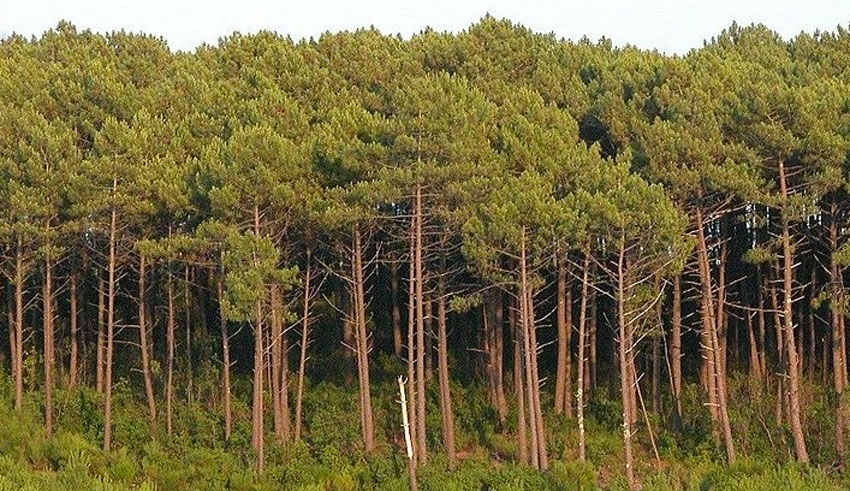
Commonly known as maritime pine, although also known as maritime or rodeno. It has dark-colored bark and thicker branches than its relative, Pinus pinea, and reaches a height of between 20 and 30 m.
Its needles are the hardestand longest of all those found on the Peninsula. Its dark green color is characteristic. Its cone is very heavy and large, and usually drips with resin. The inside of the scales is a characteristic black color.
The cones open one year after they appear. They form in spring, ripen in winter, and open in spring, revealing seeds about 8 mm long. This species grows rapidly, beginning to produce cones between 15 and 20 years after maturity.
This species of maritime pine is widely distributed. It can be found in the western half of the Mediterranean, being very widespread in the US. It adapts to a wide range of altitudes, between 0 and 2,000 m, although it has a marked preference for siliceous soils. It is resistant to drought, high temperatures, and frost.
In terms of habitat, it tends to mix with other Mediterranean species. Thus, it can be found in mixed forests of junipers, holm oaks, and Andalusian firs (in southern Spain). It also mixes with other pine species such as black pine and stone pine. It could be said that it is the most widely planted species of pine.
As for the commercial exploitation of Pinus pinaster, this species of pine is highly valued for its resin, traditionally used to make turpentine and for other industrial chemical processes. However, its wood is not very suitable due to the amount of resin it contains.
Pinus nigra, black pine, Salzmann pine, or Laricio pine
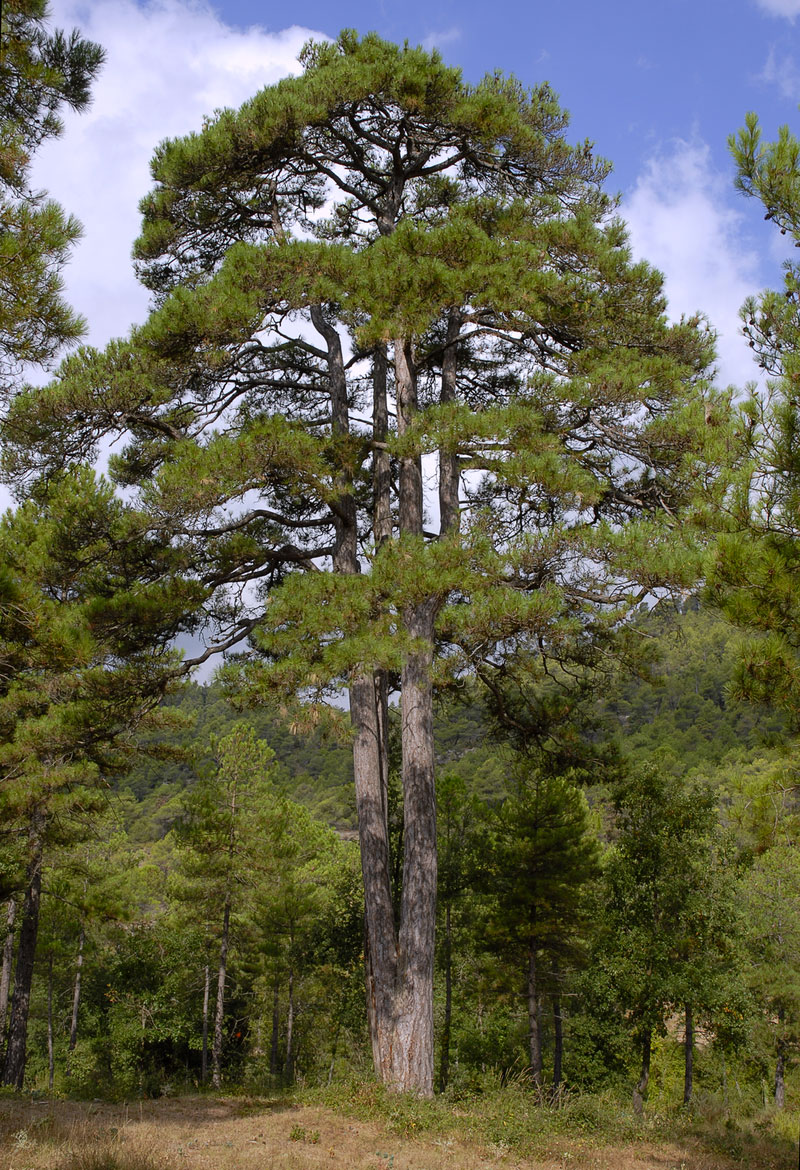
This species, popularly known as Salzmann pine, is actually called Pinus nigra subsp salzmanii. It is one of the tallest pine species, reaching heights of over 50 m. Its light-colored bark is made up of a kind of very characteristic mosaic pattern. Its needles are around 6 cm long and vary greatly in shape, undoubtedly the result of the hybridization that this species has undergone.
Its cones are medium-sized, with a characteristic light brown color and darker inner parts. The center of the cones forms a very distinctive crater.
It can be found in the Betic mountain ranges, Gredos, the Montserrat massif, and the Pyrenees. In Europe, there are different subspecies, which are especially common in Italy, the Balkans, and Greece. It needs a certain altitude, between 700 and 2000 meters above sea level, to grow, so its habitat is the mountains. It is very common in the mountainous landscapes of the Mediterranean coast.
Rodeno or Laricio pine forests are usually mixed with other species such as Scots pine, maritime pine, holm oak, sabines, junipers, beeches, and holm oaks. It is undoubtedly the oldest species of all the native pine species on the peninsula, with some specimens exceeding 1,000 years in the Sierra de Segura.
The wood is the most prized of all the types of pine we have described, which is why it is valued for forestry. It is also a species of great landscape value and home to abundant wildlife that must be protected.
Pinus sylvestris, Scots pine
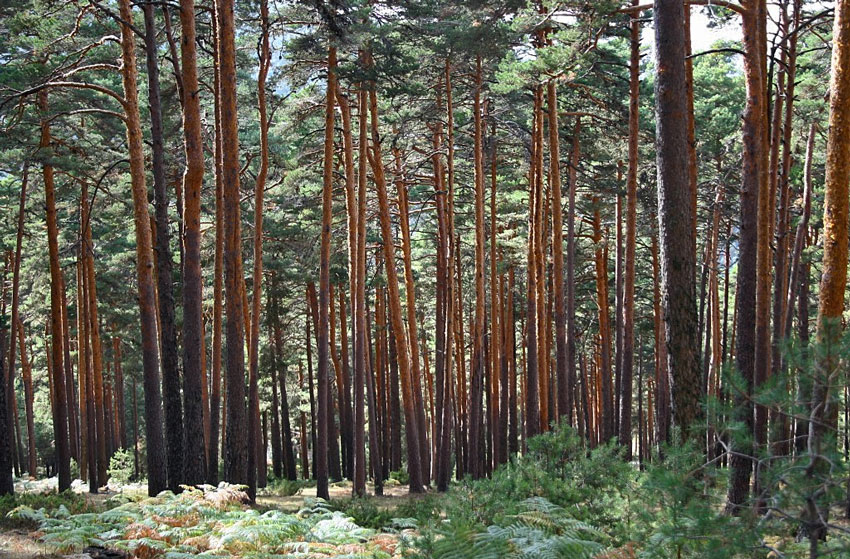
This is our Scots pine, a large species, between 35-40 m tall, with a very easily identifiable characteristic. The upper part of the trunk and branches has a very distinctive salmon color.
Its needles are green with blue tones and are twisted into a spiral shape. Its flowers appear between April and June and take up to a year to pollinate. However, the pine nuts ripen during the second season and are released at the beginning of the following spring.
The cone is very similar to that of its sister species, Pinus nigra, differing in the scales, which in Pinus silvestris form a small angle, while those of Pinus nigra are rounded.
The distribution of the Scots pine is very wide. It is probably one of the most widespread species in the world. It can even be found in North America. On the Iberian Peninsula, it occupies large areas of forest in the Pyrenees, the Iberian and Central System, Guadarrama, Castile and León, and even Portugal.
The optimal height for growth ranges between 500 and 1,800 meters above sea level, and it tends to grow in association with plants such as Cistus oromediterraneus and other pine species such as black pine, uncinata, beech, oak, and oak trees. . . It is the most cold-resistant species of pine tree.
Its wood is highly valued for construction work, but its value lies in its ability to slow down mountain erosion and provide shelter for animal species.
Pinus uncinata, black pine
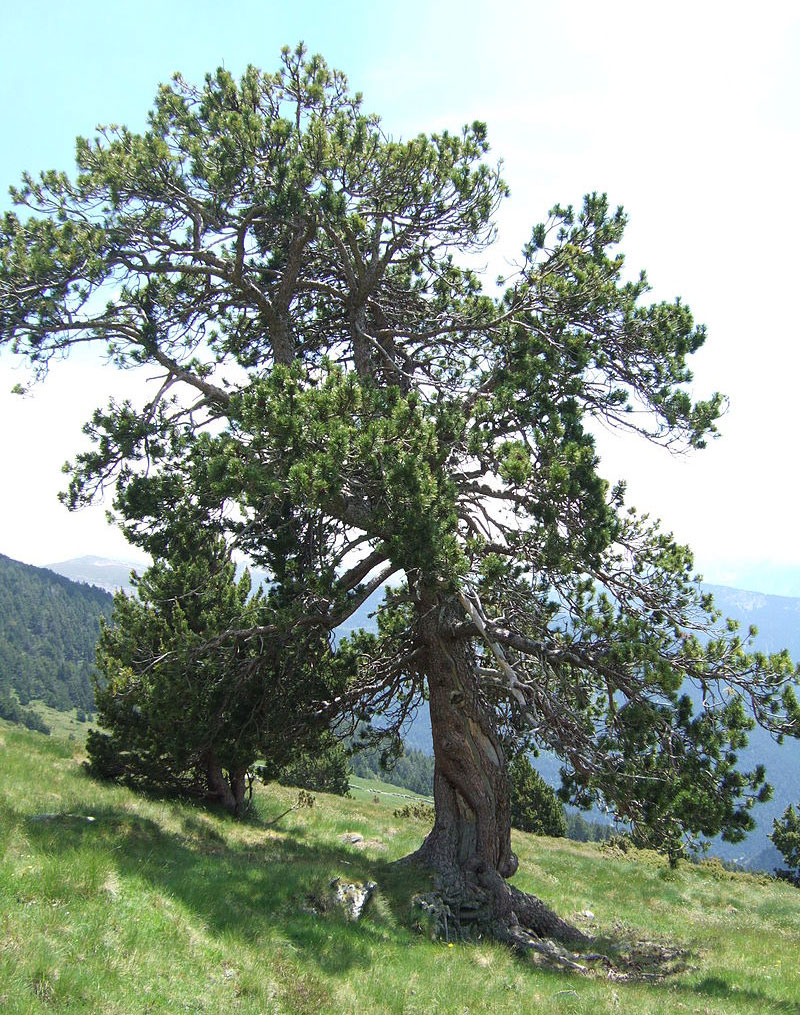
Popularly known as mountain pine or black pine. Pinus uncinata has a very dark color, and when seen from a distance, it could be said to be black. Its bark is very dark and its crown is very compact and dense. It is not one of the tallest species, reaching a height of between 20 and 25 m and sometimes growing in a twisted shape due to harsh weather conditions.
The needles are rigid and small, more so than those of its sibling, the Scots pine. The branches of the black pine are completely covered with needles. The cone also has a very dark, almost black color. They flower between May and July and ripen from the second year onwards, scattering their pine nuts from the third season onwards.
The black pine is one of the slowest growing trees and its distribution is closely linked to high mountains, between 1,200 and 2,500 m above sea level. It tolerates cold and snow very well and is not particularly demanding in terms of soil type. It is therefore found in abundance in the Pyrenees, the Sierra de Gúdar and the Sierra de la Cebollera, while in Europe it is found in the French and Swiss Alps.
Black pine forests often mix with Scots pine, beech, and fir trees. Its wood is of good quality, but its limited distribution means that it is not widely commercialized.
Pinus canarienses, Canary Island pine
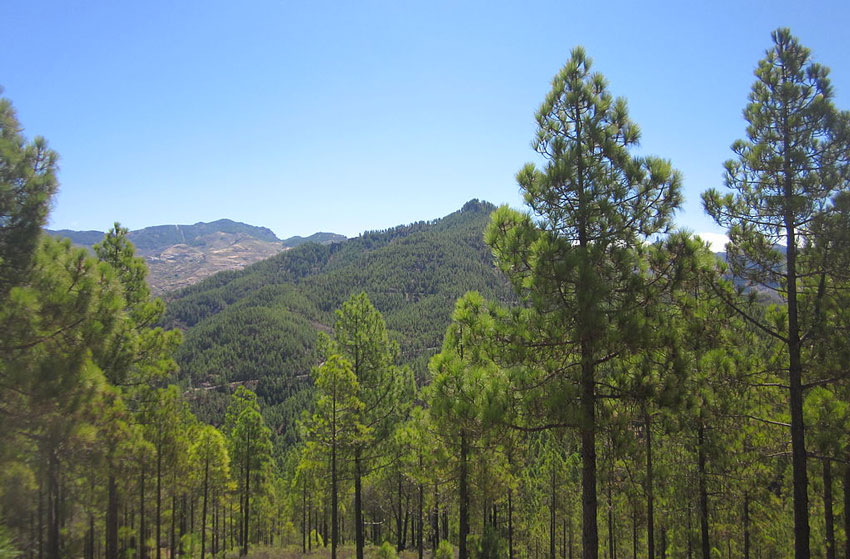
This is a species native to the Canary Islands and is undoubtedly one of the most unique pines we can find. On the one hand, it grows to enormous heights, easily exceeding 50 m. On the other hand, it has the ability to generate shoots from the trunk or from the base. This characteristic makes it resistant to fire and drought.
It is a fast-growing and fairly long-lived species, with specimens exceeding 500 years of age. Its needles are formed in groups of three, pendulous and long, with a neglected, disheveled appearance. The cones are quite large, about 20 cm, and light in color.
It is mainly found in Tenerife, Gran Canaria, La Palma, Hierro, and La Gomera. It grows at altitudes between 200 and 2,000 meters above sea level and prefers shady, predominantly siliceous soils.
Its wood, although of good quality, is not commercially exploited, its greatest value being its landscape and wildlife value.
Pinus radiata or Monterey pine
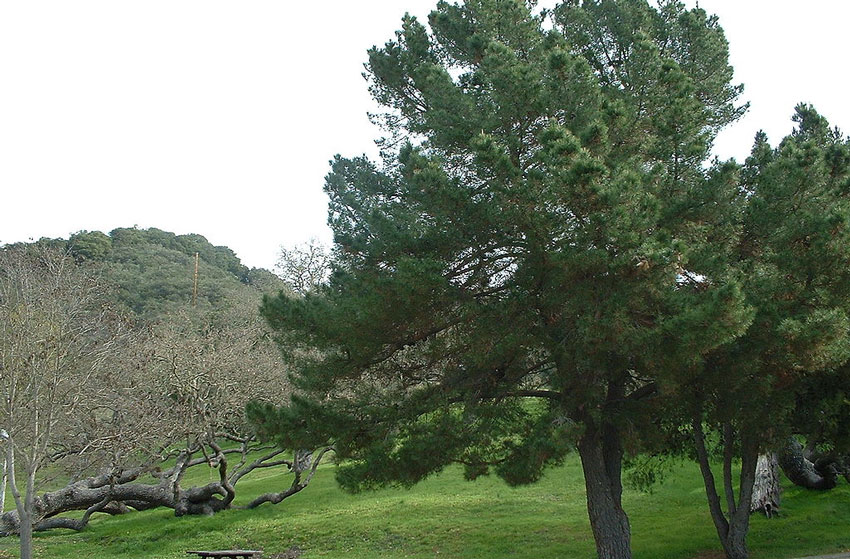
This species was introduced by humans as it is native to North America. It grows very quickly and has a short lifespan. It rarely exceeds 150 years and reaches an estimated height of around 30 m.
Its distribution is limited to certain areas in the north, mainly Navarre and Castile-and-León, although it can also be found in isolated locations in Andalusia and the Canary Islands. It does not tolerate altitudes above 700 m because it does not like the cold and needs abundant water.
It is the most highly valued wood of all the pines on the Peninsula and is also widely used for paper. However, it is a species that is very susceptible to parasites, mainly the processionary caterpillar.
Now that we know all the species of pine trees, we will be able to distinguish them on our mountain outings and enjoy the outdoors even more.

Te pueden interesar